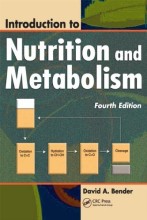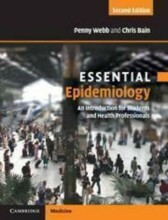NP18 Metabolic aspects of stress
20 important questions on NP18 Metabolic aspects of stress
Protein synthesis is a very complex and well programmed metabolic process. How much heat is produced during the synthesis of 1 gram of protein?
- 23.6 kJ per gram
- 18.4 kJ per gram
- 5.2 kJ per gram
- 4.0 kJ per gram
4. 4.0 kJ per gram
1 = the gross energy
2 = the metabolisable energy
3 = urea
4 = energy that is directly liked to protein synthesis
The complete oxidation of 1 gram muscle protein within the body (with urea as end product) yields?
- 4 kJ per gram protein
- 17 kJ per gram protein
- 18.4 kJ per gram protein
- 23.6 kJ per gram protein
1 = synthesis
2 = ME of dietary proteins
3 = ME
4 = GE
In monogastrics, an (artificial) increase in passage rate of protein through the digestive tract will NOT influence the ....... . Energy (kJ/gram) of the ingested protein
- Gross
- Digestible
- Metabolisable
- None of them
- Higher grades + faster learning
- Never study anything twice
- 100% sure, 100% understanding
For proteins we distinguish different structures. Which of these structures is the main target for the proteolytic enzymes from the exocrine pancreas?
- primary structure
- secondary structure
- tertiary structure
- quaternary structure
A technological treatment of dietary protein that improves the metabolic utilisation of that protein in the body has caused:
- an improvement of the "amino acid pattern" of the protein
- an improvement of digestibility of the protein
- 1 and 2 can both be true
- 1 and 2 are both false
Protein synthesis in the body can be used for different purposes with regard to maintenance, adaptation and net synthesis of body proteins. Give a ranking of these purposes with regard to the relative amount of dietary protein required to support them
- maintenance > adaptation > net synthesis
- net synthesis > maintenance > adaptation
- adaptation > net synthesis > maintenance
- net synthesis > adaptation > maintenance
Maintenance: 20%
Adaptation: 20-100%
Deposition = net synthesis: min 100%
The metabolic half-life of protein is important for their renewal rate. How much time is minimally required for a > 90% renewal of proteins with a half-life time of 6 hours.
- 6 hours
- 12 hours
- 18 hours
- 24 hours
6hr: 50%
12hr: 75%
18hr: 87.5%
24hr: 93.75%
What is the nature of the stress, what to do?
- Initially mostly unclear
- at first a non-specific stress - response
- all options are kept open
- later more directed to the stressor
What is the conflict of interest [for stress]
- Steady - state
- Homeostatic control
- Homeorhetic control of stress (coordinated changes in metabolism to support the same physiological state in another way)
- Body vs. Metabolism (time scale)
- nutritional requirements
Stress has effect on the brain, what happens when this takes place?
- increase protein synthesis
- increase fat breakdown
- glucocorticoids
- increase protein breakdown
- increase fat breakdown
- decrease insulin action
- aldosterone
- conserve sodium
- epinephrine AND norepinephrine
- increase fat breakdown
- increase glucose synthesis
- increase protein breakdown
- decrease of insulin
- decrease of glucose use
- decrease of protein and fat synthesis
- glucagon
- increase glucose synthesis
- increase protein breakdown
[mobilisation of nutrients]
Re-prioritisation - repartitioning =
- Normally certain level of turnover of nutrients (glucose, fat, protein) - flux as buffer
- Stress induces unknown requirements
- Nutrients are mobilised, but dangerous!
- free amino acids --> a lot of them is dangerous!
- Unclear whether needed
What is the stress respons
flight
- activity [muscle]
- energy [ATP]
fight
- weapons [Ab]
- protein
What are the clinical aspects of stress?
- Poor adaptation of tissues
- N-balance < 0
- N-excretion 150 mg N per kg per day = N / kg day
- Stress response of protein turnover
- The wound as organ
- Change in amino acid profiles
What happens with reprioritisation of hepatic protein synthesis?
- Decreases carrier proteins
- pre-albumin, albumin, transferrin
- Increase immune-active proteins
- acute phase proteins (APP)
- C-reactive protein, alfa-macroglobulin
- Increase synthesis of
- gluthatione, collagen
What are acute phase proteins (APP), the characteristics.
- Primarily synthesised by the liver
- Released into the circulation
- various (party k=unknown) functions
- specific amino acid composition
- up to 70 gram per day (=20% of daily capacity)
(C reactive protein, amyloid A, haptoglobin, fibrinogen etc. SMP (mixed APP))
What are conditional essential amino acids?
- glutamine - in surgical trauma and sepsis
- arginine - at times of high protein intake and of high growth
- glycine - with high intake of some xenobiotics
- proline - in severe trauma
Why is there protein loss in response to trauma?
this depletes tissue pools of these two essential amino acids leaving an unbalanced amino acid mixture that cannot be used for protein synthesis
these surplus amino acids are used as metabolic fuel
But is Bender correct here?
- there is not that much of a difference. So bender is not totally right. But overall he is
What happens with substrate cycling due to stress?
- Will increase energy requirements
- in case of protein: extra losses of amino acids, re-use can be problematic!
- changes in body composition
fat for protein
What is the cellular stress response
- Heat, anaerobic situations, radicals etc.
- Protection for survival
- Heat shock proteins (HSP) (molecular chaperones)
- Glucose regulated proteins (metabolic problems; ATP, heat?)
What is a cross stressor adaptation hypothesis?
- Relation sports and health
- A regular metabolic stress as caused by physical activity could help to overcome other stressors
- A trained sportsman can withstand 40.1 *C
- This might involve HSP, also helpful in other stressful situations
The question on the page originate from the summary of the following study material:
- A unique study and practice tool
- Never study anything twice again
- Get the grades you hope for
- 100% sure, 100% understanding
































